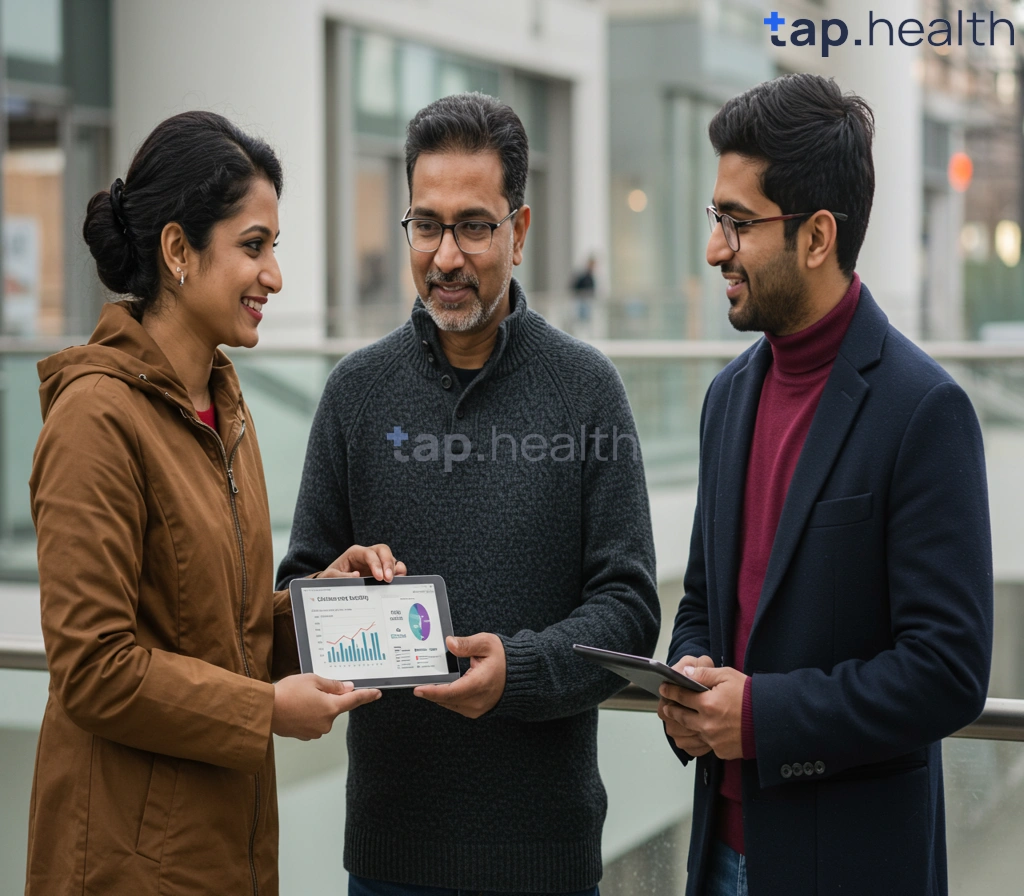Table of Contents
- Understanding Diabetes Risk Factors in Hispanic Communities
- Diabetes Prevention: A Guide for Hispanic Individuals
- How Culture and Genetics Impact Diabetes Risk in Hispanics?
- Early Detection: Key to Managing Diabetes in the Hispanic Community
- Addressing Health Disparities: Diabetes Care Within the Hispanic Population
- Frequently Asked Questions
- References
Diabetes is a serious health concern, and understanding diabetes risk in the Hispanic community is crucial for prevention and effective management. While diabetes affects many populations, certain factors increase the risk within the Hispanic community, making it vital to understand these unique challenges. This blog post will delve into the specific risk factors, explore potential contributing cultural elements, and offer practical strategies for improving health outcomes. Let’s work together to empower ourselves with knowledge and tools to combat this prevalent disease. We’ll also discuss available resources and support networks designed to help.
Understanding Diabetes Risk Factors in Hispanic Communities
Diabetes disproportionately affects Hispanic communities in many Indian and Tropical countries. This is a significant concern, given that 61% of all people with diabetes are aged between 20-64 years, a crucial working-age population. Understanding the specific risk factors within these communities is critical for effective prevention and management strategies.
Genetic Predisposition and Family History
A strong family history of type 2 diabetes is a major risk factor. Genetic predispositions, coupled with environmental and lifestyle factors prevalent in many tropical and Indian regions, create a high-risk environment. This underscores the importance of regular health checks and early intervention within families.
Lifestyle Factors: Diet and Physical Activity
Dietary habits play a crucial role. Traditional diets in many Hispanic communities in India and tropical countries may be high in carbohydrates and saturated fats, contributing to weight gain and insulin resistance. Limited access to fresh produce and a sedentary lifestyle further increase the risk of developing type 2 diabetes. Promoting healthier dietary choices and increased physical activity is paramount.
Socioeconomic Factors
Access to healthcare and health education can vary significantly across Hispanic communities in these regions. Limited access to resources, including affordable healthy food options and healthcare facilities, can hinder early diagnosis and management of diabetes. Addressing these socioeconomic disparities is crucial in reducing the burden of diabetes.
Actionable Steps for Prevention
Individuals within these communities can take proactive steps. Regular exercise, a balanced diet rich in fruits and vegetables, and maintaining a healthy weight are vital. Regular check-ups with healthcare professionals are also crucial for early detection and management. Seeking support from community health programs can provide valuable resources and guidance. Learning about effective diabetes management strategies, as described in Managing Diabetes as You Age: Challenges and Solutions, is also crucial for long-term health. By understanding and addressing the specific challenges, we can work towards improving the health outcomes of Hispanic communities in India and tropical countries. Improved health outcomes are significantly linked to diabetes education, as highlighted in How Diabetes Education Enhances Health Outcomes – Tap Health.
Diabetes Prevention: A Guide for Hispanic Individuals
Diabetes disproportionately affects the Hispanic community, a concern amplified in Indian and Tropical countries where lifestyle changes and access to healthcare can pose unique challenges. While the rate of diagnosed diabetes in U.S. youth is approximately 35 per 10,000, research shows significantly higher rates among Hispanic adults. Understanding these risks is the first step towards prevention.
Understanding Your Risk Factors
Several factors increase the risk of developing type 2 diabetes within the Hispanic community, many intertwined with cultural practices and socioeconomic conditions prevalent in India and Tropical countries. These include a higher prevalence of obesity, a family history of diabetes, and a diet often heavy in processed foods and sugary drinks. Sedentary lifestyles, limited access to fresh produce, and stress are also significant contributors.
Practical Steps for Prevention
Fortunately, proactive steps can significantly reduce your risk. Prioritizing a balanced diet rich in fruits, vegetables, and whole grains is crucial. This involves incorporating traditional, healthy ingredients from your cultural heritage while minimizing processed foods and sugary beverages. Regular physical activity, even 30 minutes most days of the week, is equally vital. This could involve activities common in your region like walking, dancing, or participating in community sports. Regular checkups with your doctor are essential for early detection and management. Once diagnosed, learning 10 Proven Tips for Effective Diabetes Management can be crucial for maintaining good health.
Seeking Support and Resources
Connecting with community resources and support groups can provide invaluable assistance. Many organizations in Indian and Tropical countries offer diabetes education programs tailored to the specific needs of Hispanic communities. These programs offer vital information on healthy eating, physical activity, and stress management, while also fostering a sense of community and shared experience. Taking control of your health is an empowering journey, and prevention is always better than cure. Schedule a checkup today to assess your risk and discuss a personalized prevention plan. Remember that managing diabetes also involves protecting your heart; learn more about Protecting Your Heart from Diabetes: 5 Essential Steps.
How Culture and Genetics Impact Diabetes Risk in Hispanics?
The alarmingly high rates of diabetes within the Hispanic community, particularly in Indian and Tropical countries, are a complex issue stemming from a confluence of genetic predisposition and cultural factors. Understanding these influences is crucial for effective prevention and management. Studies show a strong correlation between lifestyle choices and the disease; for example, daily consumption of sugary beverages raises diabetes risk by 26%. This statistic highlights the critical role of diet in this health crisis.
Genetic Predisposition and Family History
A significant factor contributing to heightened diabetes risk in Hispanics is genetic inheritance. Certain genes increase susceptibility to type 2 diabetes, and a family history of the disease substantially raises an individual’s chances of developing it. This genetic vulnerability is often amplified by environmental factors, emphasizing the interplay between nature and nurture. In many Hispanic cultures, family gatherings often center around meals rich in carbohydrates and fats, further increasing the risk for those genetically predisposed.
Cultural Influences on Diet and Lifestyle
Cultural practices and traditions significantly impact dietary habits and overall lifestyle within the Hispanic community. Traditional diets in many Indian and Tropical Hispanic countries often include high levels of processed foods, sugary drinks, and less emphasis on fruits and vegetables. This, combined with lower rates of physical activity compared to other populations, contributes to an environment conducive to the development of diabetes. Furthermore, cultural norms surrounding food and celebrations can exacerbate unhealthy eating habits. It’s also important to consider how external factors, such as How Does Hot Weather Affect Diabetes?, might interact with these predispositions.
Actionable Steps for Prevention
For Hispanic communities in India and Tropical countries, adopting a preventative approach is vital. This involves incorporating more fruits, vegetables, and whole grains into the diet, reducing the consumption of sugary beverages, and increasing physical activity levels. Promoting healthy lifestyle choices through community education and awareness programs is essential in tackling this significant health concern. By understanding and addressing both the genetic and cultural aspects of diabetes risk, we can work towards improved health outcomes within the Hispanic community. Managing diabetes effectively can also help mitigate some of its complications, such as those affecting hair health, as explored in Diabetes and Hair Loss: Is There a Connection?.
Early Detection: Key to Managing Diabetes in the Hispanic Community
Understanding the Urgent Need for Early Diagnosis
Diabetes disproportionately affects the Hispanic community in many Indian and tropical countries. A staggering 50% of diabetes cases worldwide go undiagnosed, according to the IDF Diabetes Atlas, a statistic that is likely even higher in underserved populations. This highlights the critical need for increased awareness and proactive screening, especially within the Hispanic community where cultural factors, access to healthcare, and specific risk profiles may contribute to delayed diagnosis. Early detection is paramount because it allows for timely intervention, significantly reducing the risk of serious long-term complications.
Actionable Steps for Early Detection
Regular blood sugar checks are crucial. Individuals with a family history of diabetes, those who are overweight or obese, or those with a sedentary lifestyle are at increased risk and should prioritize regular testing. Many community health centers in Indian and tropical countries offer free or low-cost screening programs specifically targeting diabetes prevention and early detection within the Hispanic population. Don’t hesitate to take advantage of these resources! Additionally, open communication with your healthcare provider is essential – discuss your concerns and family history to determine a suitable screening schedule. Early diagnosis empowers individuals to make informed lifestyle changes and manage their blood sugar levels effectively, preventing or delaying debilitating complications. Maintaining a healthy lifestyle, including sufficient sleep, is also vital. Read more about the importance of sleep in diabetes management in our article, The Importance of Quality Sleep in Managing Diabetes.
Empowering the Hispanic Community
Taking proactive steps towards early detection is crucial for improving the health outcomes of the Hispanic community in Indian and tropical countries. By raising awareness about the risks of diabetes and promoting access to screening and education resources, we can collectively make a meaningful difference in combating this prevalent health challenge. Seek out local resources and support groups to learn more and connect with others facing similar challenges. Your health is your greatest asset – invest in it today. Remember that a strong immune system is also crucial for managing diabetes effectively. For tips on boosting your immunity, check out our article on Boosting Immunity While Managing Diabetes.
Addressing Health Disparities: Diabetes Care Within the Hispanic Population
The global burden of diabetes is staggering, with over 75% of those affected residing in low- and middle-income countries, as highlighted by the International Diabetes Federation. This statistic holds particular significance when considering the Hispanic population in Indian and tropical countries, where diabetes prevalence is rising rapidly and often coupled with limited access to quality healthcare. Understanding this disparity is crucial for effective intervention and improved health outcomes.
Socioeconomic Factors and Access to Care
Many Hispanic communities in these regions face significant socioeconomic challenges that directly impact diabetes management. Poverty, limited health insurance coverage, and geographic isolation create barriers to accessing regular medical checkups, medication, and specialized diabetes care. Furthermore, cultural beliefs and practices can sometimes influence treatment adherence. Addressing these systemic issues is vital for reducing the disproportionate impact of diabetes within the Hispanic community. The link between obesity and diabetes is also a critical factor to consider, as explored in our article, Understanding the Link Between Diabetes and Obesity.
Improving Diabetes Outcomes: A Regional Focus
Effective strategies must account for the unique context of each region. This involves promoting culturally sensitive diabetes education programs, expanding access to affordable healthcare facilities, and empowering community health workers to play a key role in outreach and support. Investing in diabetes prevention programs targeted at high-risk groups within the Hispanic community is also essential. By implementing comprehensive and culturally tailored interventions, we can work towards achieving better diabetes management and improved quality of life for this vulnerable population. It’s also important to acknowledge the significant impact that diabetes can have on mental health, as discussed in The Impact of Diabetes on Mental Health.
Taking Action
The challenge of diabetes within the Hispanic population in Indian and tropical countries demands immediate and sustained action. Support local health initiatives, advocate for better healthcare policies, and spread awareness within your community. Let’s collaborate to create a healthier future for everyone.
Frequently Asked Questions
Q1. What are the main risk factors for diabetes in Hispanic communities, particularly in India and tropical countries?
Several factors increase diabetes risk in these communities. Genetic predisposition and family history play a significant role, often combined with lifestyle factors like diets high in carbohydrates and saturated fats, limited physical activity, and a lack of access to fresh produce. Socioeconomic factors, such as limited access to healthcare and health education, also contribute significantly.
Q2. What practical steps can Hispanic individuals take to prevent or manage diabetes?
Prioritize a balanced diet rich in fruits, vegetables, and whole grains, reducing processed foods and sugary drinks. Regular physical activity (at least 30 minutes most days) is crucial. Regular check-ups with a doctor are essential for early detection and management. Connecting with community resources and support groups can provide valuable assistance and education.
Q3. How do cultural and genetic factors interact to influence diabetes risk in Hispanics?
Genetics significantly increases susceptibility. A family history of diabetes substantially raises the risk. Cultural factors influence diet and lifestyle, with traditional diets often high in carbohydrates and fats and limited physical activity. This combination of genetic predisposition and cultural habits creates a high-risk environment.
Q4. Why is early detection of diabetes so crucial in the Hispanic community?
Early detection allows for timely intervention, reducing the risk of serious long-term complications. A large percentage of diabetes cases globally go undiagnosed, especially in underserved populations. Early diagnosis enables lifestyle changes and effective blood sugar management.
Q5. How can we address health disparities and improve diabetes care within the Hispanic community?
Addressing socioeconomic factors like poverty, limited healthcare access, and geographic barriers is essential. Culturally sensitive diabetes education programs, affordable healthcare facilities, and community health worker involvement are vital. Investing in prevention programs targeted at high-risk groups is also crucial.
References
- Understanding the Effectiveness of Diabetes Self-Management Education on Psychological Distress and Self-care Activity Measures: A Focus on Latinx Community: https://scholarworks.sjsu.edu/cgi/viewcontent.cgi?article=1145&context=etd_doctoral
- A Practical Guide to Integrated Type 2 Diabetes Care: https://www.hse.ie/eng/services/list/2/primarycare/east-coast-diabetes-service/management-of-type-2-diabetes/diabetes-and-pregnancy/icgp-guide-to-integrated-type-2.pdf
Meta Data
Meta Title: Diabetes in Hispanic Communities | Prevention and Management
Meta Description: Discover alarming diabetes rates among Hispanic communities. Learn proven prevention strategies, including balanced diets, regular exercise, and early detection for better health outcomes. Take control of your health today!
alt_text: Hispanic community diabetes prevention
url_slug: diabetes-hispanic-community





